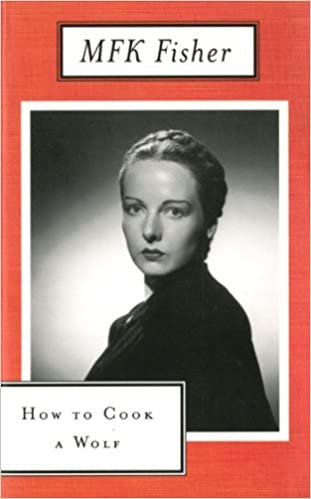MFK Fisher provides a timely and engaging guide in her 1942 cookbook “How to Cook a Wolf” on how to eat well on a tight budget during World War II. Despite being published decades ago, Fisher’s witty and informative prose still provides a fascinating insight into the culinary obstacles Americans encountered during a time of rationing and scarcity, making it relevant even today.
Fisher advocates a practical and down-to-earth approach to cooking during times of scarcity, urging readers to adopt frugality and resourcefulness. She provides inventive suggestions for maximizing ingredients and utilizing every scrap of food, such as making a flavorful broth from chicken bones or a tasty soup from wilted greens. Fisher’s recipes are intended to extract the most from what is available.
Fisher’s book goes beyond a practical budget cooking guide, as it also celebrates the joys of food and its significance in our lives. Fisher expresses her fervent love and excitement for cooking and eating, inspiring readers to take delight in life’s simple pleasures.
Fisher’s writing style is one of the most enjoyable aspects of “How to Cook a Wolf.” Her prose is lively, engaging, and brimming with wit and humor. Fisher can transform even the dullest culinary aspects into an entertaining and informative read. Whether she is discussing the advantages of utilizing bacon grease for frying or praising a simple bowl of soup, Fisher’s writing is a source of pleasure for readers.
Fisher’s recipes are a pleasure in themselves. She advocates for a straightforward approach, emphasizing fresh, seasonal ingredients and uncomplicated preparation techniques. Fisher’s recipes, such as scrambled eggs with mushrooms and sherry or a comforting beef stew, are intended to be accessible and easy to follow.
The historical context of “How to Cook a Wolf” is intriguing. Fisher wrote the book when food shortages were a genuine and urgent problem for numerous Americans. Her pragmatic cooking approach indicates the difficulties millions of people faced during the war period, and her recipes provide a glimpse into the creative methods people adopted to cope with their circumstances.
“How to Cook a Wolf” is a delightful and informative. It is a testament to the enduring appeal of good food and the joy it can bring our lives. Fisher’s writing is engaging and entertaining, and her recipes are practical, delicious, and easy to follow. This book is an absolute must-read for anyone interested in the history of food or the pleasures of cooking.
